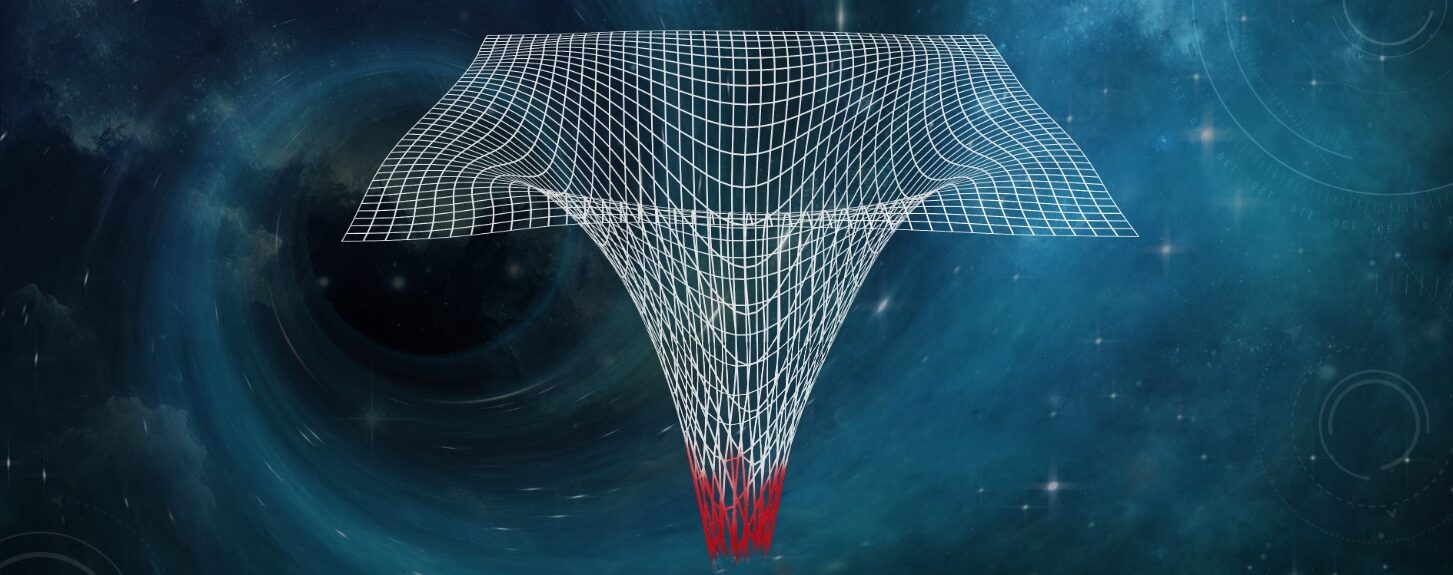Update of 12.07.2024: this call is now closed.
Announcement of 03.06.2024: we invite applications for up to five Ph.D. student positions in the project
A new Geometry for Einstein’s Theory of Relativity and beyond
which has recently received major funding by the Austrian Science Fund (FWF) in the framework of its “Emerging Fields” program, see https://ef-geometry.univie.ac.at.
During the past decades, a powerful mathematical formalism that provides a very robust notion of curvature for the non-smooth Riemannian setting has been developed. Based on the mathematical theories of metric (measure) geometry [2], optimal transport [16], and Dirichlet spaces [5] it has deeply influenced Riemannian geometry. In this synthetic setting the prime object is the distance function and sectional curvature bounds are encoded via triangle comparison (Alexandrov and CAT(k)-spaces), while Ricci curvature bounds are expressed through the convexity properties of an entropy functional ((R)CD-spaces). After the notion of synthetic lower curvature bounds was introduced, numerous analytic (e.g. [1, 6]) and geometric (e.g. [7]) results were proven in this non-smooth setting.
In 2018 our research group formulated the foundations of a synthetic Lorentzian geometry [11]. It provides a strong link between the powerful methods described above that so far have only been available in Riemannian spaces, and the geometric language of General Relativity (GR). The main motivation was to extend GR beyond its standard formulation in terms of smooth spacetimes, as is demanded both by the PDE-approach to the initial value formulation of the Einstein equations, as well as by physically realistic models such as matched spacetimes and impulsive gravitational waves. This new synthetic approach thereby complements and greatly extends earlier purely analytic approaches to non-smooth spacetime geometry (e.g. [8, 10]).
The aim of this project is to advance synthetic Lorentzian geometry and turn it into a mature field, see [12, 3, 13, 14] for recent advances. Moreover, we aim for applications in GR (e.g. [9, 4]) and beyond, in particular, to fundamentally discrete approaches to Quantum Gravity such as e.g. Causal Set Theory (e.g. [15]).
We are expecting to fill up to five Ph.D. positions, each for a duration of three years, starting from fall 2024 (October or later). We are looking for exceptional candidates with a strong background in at least one, preferably several, of the following fields: Riemannian/Lorentzian geometry, functional analysis and measure theory, optimal transport, metric geometry, calculus of variations, geometric analysis, mathematical General Relativity.
The successful applicants will be supervised by members of the PI-team Michael Kunzinger, Raquel Perales, Chiara Rigoni, Clemens Sämann, and Roland Steinbauer. They will also become members of the Vienna School of Mathematics and are expected to participate in its activities and organisation. Ph.D students will be employed by the University of Vienna, according to its salary scheme with a gross value per year of approx. 37.5k Euros. The positions do not include teaching duties, but limited teaching possibilities will be available.
Please submit your application including an academic CV, transcripts, and a letter of purpose to
ef-applications.mathematics@univie.ac.at
In addition, please arrange for two letters of reference to be sent directly to the same address.
The deadline for applications is July 10. However, applications will continue to be reviewed until the positions are filled.
References
[1] L. Ambrosio, N. Gigli, G. Savaré. Metric measure spaces with Riemannian Ricci curvature bounded from below. Duke Math. J., 163(7):1405–1490, 2014. 10.1215/00127094-2681605.
[2] D. Burago, Y. Burago, S. Ivanov. A course in metric geometry, volume 33 of Graduate Studies in Mathematics. American Mathematical Society, Providence, RI, 2001. 10.1090/gsm/033.
[3] F. Cavalletti, A. Mondino. Optimal transport in Lorentzian synthetic spaces, synthetic timelike Ricci curvature lower bounds and applications. Cambridge Journal of Mathematics, to appear, arXiv:2004.08934 [math.MG], 2020. 10.48550/arXiv.2004.08934.
[4] G. Del Nin, R. Perales. Rigidity of mass-preserving 1-Lipschitz maps from integral current spaces into \(\mathbb{R}^n\). J. Math. Anal. Appl., 526(1):Paper No. 127297, 17, 2023. 10.1016/j.jmaa.2023.127297.
[5] M. Fukushima, Y. Oshima, M. Takeda. Dirichlet forms and symmetric Markov processes, volume 19 of De Gruyter Studies in Mathematics. Walter de Gruyter & Co., Berlin, extended edition, 2011.
[6] N. Gigli. Nonsmooth differential geometry—An approach tailored for spaces with Ricci curvature bounded from below. Mem. Amer. Math. Soc., 251(1196):v+161, 2018. 10.1090/memo/1196.
[7] N. Gigli, C. Rigoni. Recognizing the flat torus among \(\mathrm{RCD}^\ast(0, N)\) spaces via the study of the first cohomology group. Calc. Var. Partial Differ. Equ., 57(104), 2018. 10.1007/s00526-018-1377-z.
[8] M. Graf, J. D. E. Grant, M. Kunzinger, R. Steinbauer. The Hawking–Penrose Singularity Theorem for \(C^{1,1}\)-Lorentzian Metrics. Comm. Math. Phys., 360(3):1009–1042, 2018. 10.1007/s00220-017-3047-y.
[9] J. D. E. Grant, M. Kunzinger, C. Sämann. Inextendibility of spacetimes and Lorentzian length spaces. Ann. Global Anal. Geom., 55(1):133–147, 2019. 10.1007/s10455-018-9637-x.
[10] M. Kunzinger, A. Ohanyan, B. Schinnerl, R. Steinbauer. The Hawking-Penrose singularity theorem for \(C^1\)-Lorentzian metrics. Comm. Math. Phys., 391(3):1143–1179, 2022. 10.1007/s00220-022-04335-8.
[11] M. Kunzinger, C. Sämann. Lorentzian length spaces. Ann. Glob. Anal. Geom., 54(3):399–447, 2018. 10.1007/s10455-018-9633-1.
[12] R. J. McCann. Displacement convexity of Boltzmann’s entropy characterizes the strong energy condition from general relativity. Camb. J. Math., 8(3):609–681, 2020. 10.4310/CJM.2020.v8.n3.a4.
[13] E. Minguzzi, S. Suhr. Lorentzian metric spaces and their Gromov-Hausdorff convergence. Lett. Math. Phys., 2024. 10.48550/arXiv.2209.14384.
[14] A. Mondino, S. Suhr. An optimal transport formulation of the Einstein equations of general relativity. J. Eur. Math. Soc. (JEMS), 25(3):933–994, 2023. 10.4171/jems/1188.
[15] S. Surya. The causal set approach to quantum gravity. Living Reviews in Relativity, 22(5), 2019. 10.1007/s41114-019-0023-1.
[16] C. Villani. Optimal transport. Old and New. Springer, 2009. 10.1007/978-3-540-71050-9.


